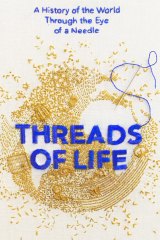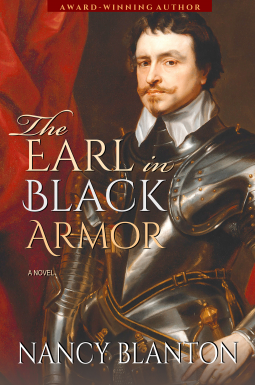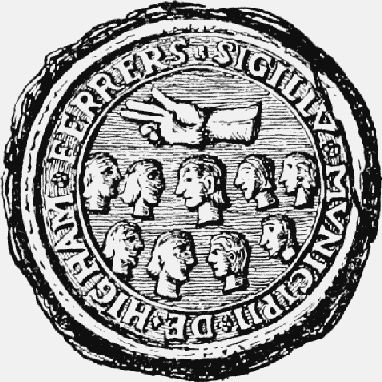Most of the Irish upper classes, however, were not ideologically opposed to the sovereignty of the King of England over Ireland, but wanted to be full subjects of the triple Stuart monarchy and maintain their pre-eminent position in Irish society. This was prevented by their religious dissidence and the threat posed to them by the extension of the Plantations. The Protestant settler-dominated Government of Ireland tried to confiscate more land from the native landowners by questioning their medieval land titles and as punishment for non-attendance at Protestant services. In response, Irish Catholics appealed directly to the King, first to James I and then Charles I, for full rights as subjects and toleration of their religion: a program known as
The Graces. On several occasions, the Monarchs appeared to have reached an agreement with them, granting their demands in return for raising taxes. However, Irish Catholics were disappointed when, on paying the increased levies, the King postponed the implementation of their demands. What was more, by the late 1630s,
Thomas Wentworth, Charles' representative in Ireland, was proposing further widespread confiscations of native land to break the power of the Irish Catholic upper classes. It is likely that this would eventually have provoked armed resistance from Irish Catholics at some point, but the actual rebellion was sparked by a political crisis in Scotland and England that led to civil war in the three Kingdoms.
Richard Burke, 4th Earl of Clanricarde, was an Irish nobleman and politician, in addition to being one of the leading landowners in Ireland. His power and influence in Connaught was the source of increasing animosity between himself and the acquisitive Dublin government, who decided to use the method of empanelling juries to "find" defective titles, in order to recover the lands in question for the English Crown. And yet, as Viscount of St Albans, Burke had official immunity from these recusancy proceedings.
Thomas Wentworth, 1st Earl of Stafford, whose tenure as Lord Deputy of Ireland would have long and damaging consequences (It is likely that this would eventually have provoked armed resistance from Irish Catholics at some point, but the actual rebellion was sparked by a political crisis in Scotland and England that led to civil war ), was not above using a method of bullying and curated jury selection in his persecution of Catholics as he made his way through the west coast of Ireland in his quest to secure lands for the Plantations.
It is against this backdrop that the opening scenes are played out - a jury in Galway refuses to find the King's title (prerogative) to land under the Sovereignty Act of 1633:
Oure Soverane Lord With advyse consent and assent of the whole estaites acknowledging his Majesties Soveraigne authoritie princelie power royall prerogative and priuiledge of his crowne over all estaites persones and causes quhatsumevir within this kingdome Ratifies and approues the act of parliament maid in the yeir 1606 Anent the kings royall prerogative And perpetuallie Confirmes the same for his hienes his airs and successors Als amplie absolutelie and frielie in all respectis as ever any of his Majesties royall progenitors did possess and exercise the same . . .
The jury subsequently find themselves imprisoned in Dublin castle (Aug 1635) and a substantial fine (or ransom) is imposed on Ulick Burke, who has now succeeded to the lands of Clanricarde upon the untimely death of his father, for their release.
" .... can it be imagined that a stranger should come to this county of Galway and think to compass his ends ..." (Ulick Burke, 1st Marquess of Clanricarde, 1642)
Meanwhile, Faolán Burke is sent to Dublin to spy on Thomas Wentworth, with two aims: to free the imprisoned jurors and to discover any dark deeds that could force King Charles to recall Wentworth to England. This shouldn't be too hard as Wentworth was collecting enemies through not upholding the promises to return lands back to the landowners in return for their full support. In politics, however, nothing is ever quite that simple. The story of Thomas Wentworth is played out through the eyes of Faolin Burke, who is now in his service and travels freely with Wentworth throughout England and Ireland, and is there to act witness.
The view of Charles I during this period is not that of a benevolent and popular figure - here he is portrayed as a tyrant, who has crippled his subjects with taxes and forcing them to war. In London and elsewhere, bloody riots and fires result in the King's termination of Parliament - chaos and arrest soon follow.
Wentworth laments "... never came a man to so lost a business ..." and yet he still continues with his unpopular policies in his service of the King ".... I am but a servant. I must stand by my beliefs .."
Without delving further and revealing all, this is a well researched and crafted tale, which keeps the reader wondering just how far into Wentworth's career the author is taking them. This is one in a series, though can be read as a stand alone novel. It is long as there is much to encapsulate, and a knowledge of the period is recommended.
Further reading:
A New History of Ireland: Volume III: Early Modern Ireland 1534-1691 by T. W. Moody, F. X. Martin, F. J. Byrne
Contested Island: Ireland 1460-1630: Ireland 1460-1630 by SJ Connolly
Divided Kingdom: Ireland 1630-1800 by S. J. Connolly
The Political World of Thomas Wentworth, Earl of Strafford, 1621-1641 edited by J. F. Merritt
Thomas Wentworth: First Earl of Strafford, 1593-1641 : a Revaluation by Cicely Veronica Wedgwood
Thine is the kingdom: the trial for treason of Thomas Wentworth, Earl of Strafford, First Minister to King Charles I and last hope of the English Crown by John H. Timmis
Strafford in Ireland 1633-1641: A Study in Absolutism by Hugh F. Kearney
Further reading online:



















